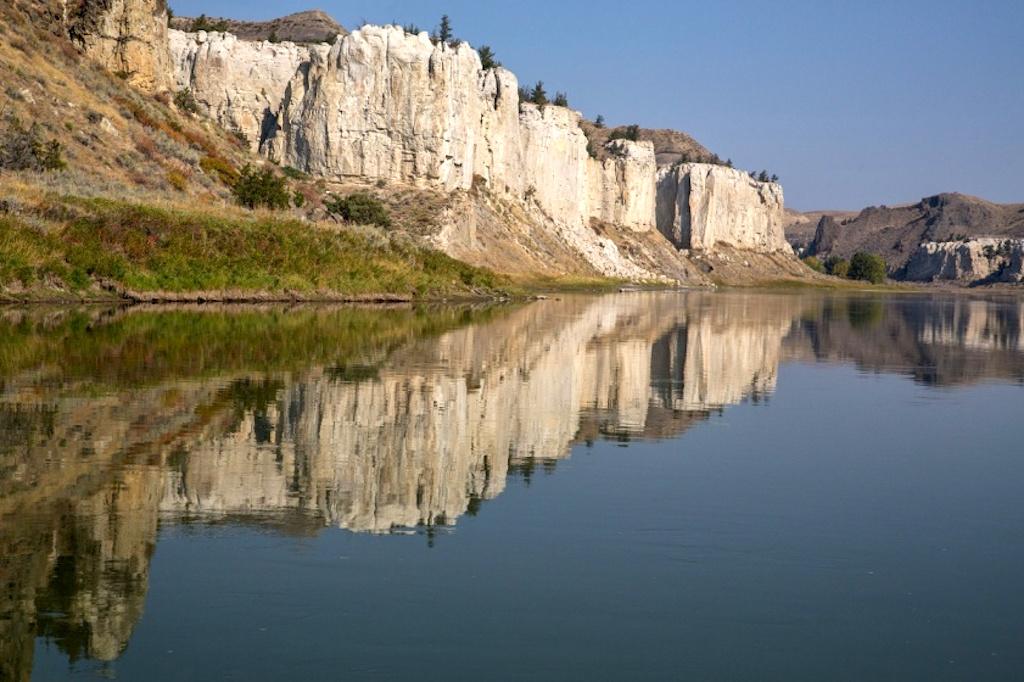
Upper Missouri River Breaks National Monument/BLM
Exploring the West by canoe or kayak long has been near the top of my to-do list, and Upper Missouri River Breaks National Monument, with its 149 river miles to paddle, is naturally on that list. I'll just have to remember not to drink the water.
That seems a bit strange, particularly with today's water filtration systems. But as I started charting a river trip on the Missouri, I went to the U.S. Bureau of Land Management's website to see what was available for planning purposes. The BLM was on top of its game in that area, with two "boater's guides" that help you navigate the not-quite 150 river miles from Fort Benton to James Kipp Recreation Area.
This is a float through history, as it is the same route Lewis and Clark took more than 200 years ago as they explored the West for President Thomas Jefferson. So many stories are held in this river corridor and its surrounding "breaks." It's a float largely through a setting mostly unchanged since Lewis and Clark came through, too, as development hasn't greatly intruded on the river corridor.
Welcome to the Upper Missouri River Breaks National Monument. It’s a place where American Indians made their homes for centuries. It’s a place where Lewis and Clark walked, camped and wrote about 200 years ago. It’s a place where mountain men climbed the river rim and caught their first glimpse of the snow-crested Rocky Mountains to the west. It’s a place where generations of Montana ranchers have made their homes. The Upper Missouri River remains a place where time seems to move a little slower, and history and adventure greet you around each bend of the river.
... The Upper Missouri landscape you’ll see remains largely unchanged from what Lewis and Clark saw 200 years ago. If properly cared for, Meriwether Lewis’ “visionary inchantment” of the Upper Missouri will remain, while needed natural resources are put to use.
And so it was a bit surprising, and even disconcerting to read on the boater's guide that you should plan to bring all the water you plan to drink with you. Why? The guide covering Judith Landing to James Kipp Recreation Area explains in its "Safety Considerations" section:
Do not filter or boil water from the Missouri or its tributaries to use for cooking or consumption. There is agricultural runoff as well as cattle excrement that is not removable using aforementioned processes.
That's something to keep in mind when you're planning a river trip, especially if you want to paddle all 149 miles, an endeavor estimated to take 9-11 days, depending on how much you explore off the water. With a recommendation that each person take a gallon of water for every day on the water, that means anywhere between 9 and 11 gallons. At 8.3 pounds per gallon, that translates to 74.7-91.3 pounds per person. If you're figuring two people per canoe, that means you'll have to figure between 149-183 extra pounds just for water, or the equivalent of a third person in your boat.
Still, if you like wilderness paddling, this sounds like a pretty good opportunity.



Comments
...agricultural runoff as well as cattle excrement that is not removable...
Isn't that just lovely
I'd think that all that runoff and manure might be removable at the source.
That cattle "excrement" isn't only in the river water. You also find it in the campsites and the canoe landings, like at Dark Butte, that aren't fenced off.
"At 8.3 pounds per gallon, that translates to 74.7-91.3 gallons per person."
Shouldn't that read 74.7-91.3 POUNDS?
Always good to know that we have some sharp eyes out there! Just proof that what the brain says the fingers sometimes ignore. We'll fix it, Gypsy.
Did anyone try the Berkey purification system? It is not deemed a filter, because it removes viruses, bacteria, chemicals, and 99.999 percent of it all. It removes everything but flouride (and they even have a filter for that).
I went down the river solo a couple years ago from Ft Benton to Kipp. It was awesome! Took me 5 days, though I could have used a couple extra for hikes ( I did a few). Brought all my own water and an activated charcoal gravity system from Berkey as a backup. Also rented a satellite phone so I could let my wife know I was ok. Lightning and rattlesnakes are really the main hazards...rapids are pretty chil. Note that below Judith Landing the river slows a lot and the scenery is becomes more generic badlands. But the big negative is that heavy floods have deposited several feet of gooey silt along the banks, burying campground signage and making kayak entry and exit pretty messy - I sank in up to my thigh and the bit was coated with sticky adobe-like mid the last two days. Must be careful on where you go ashore!